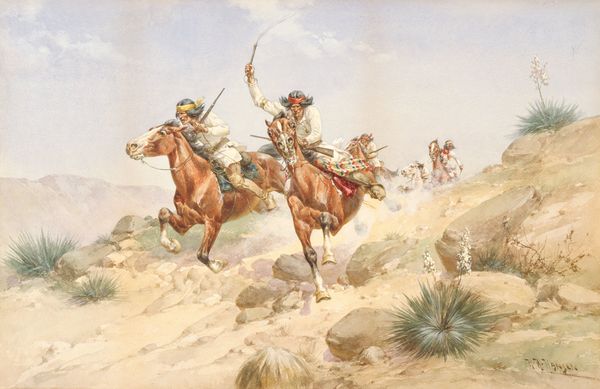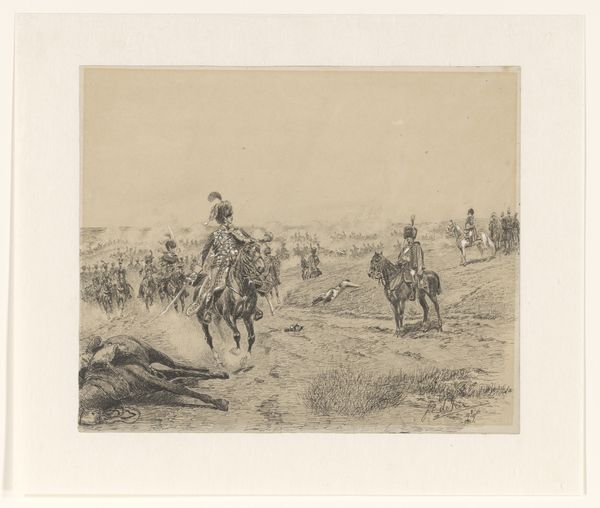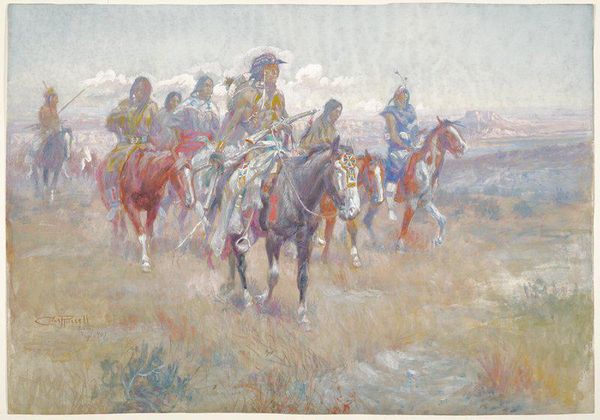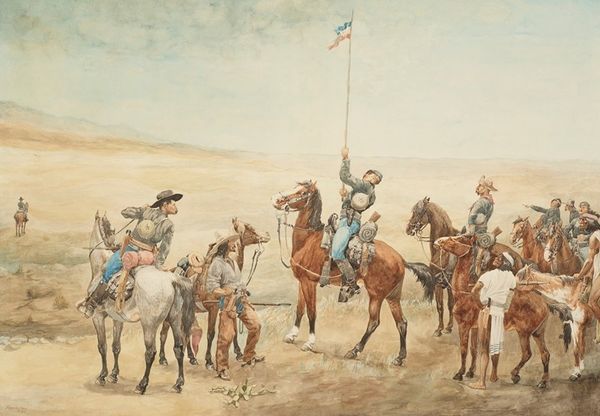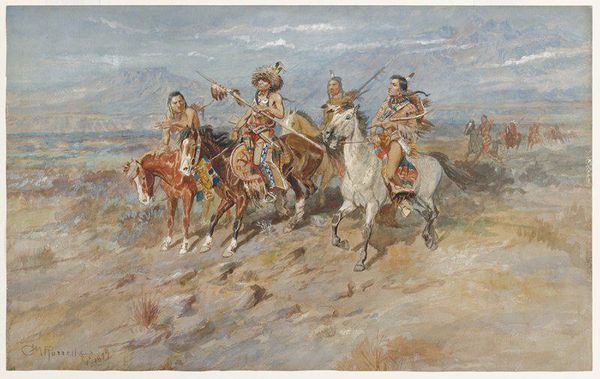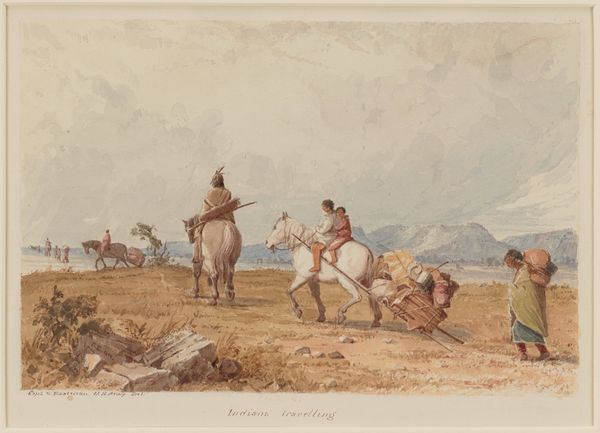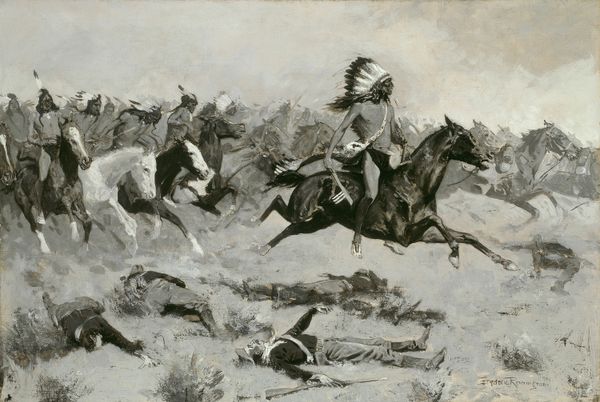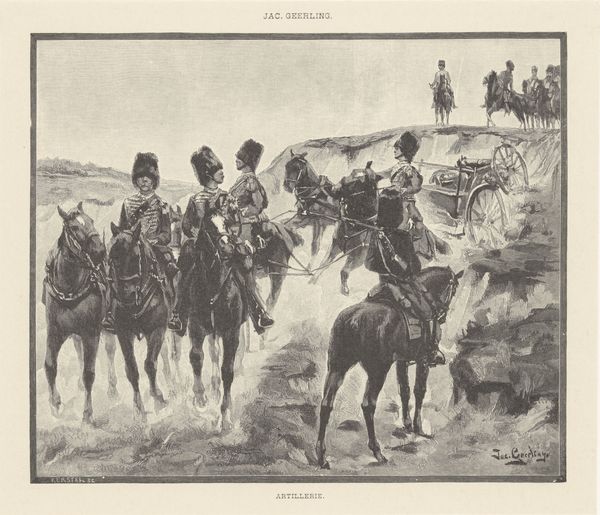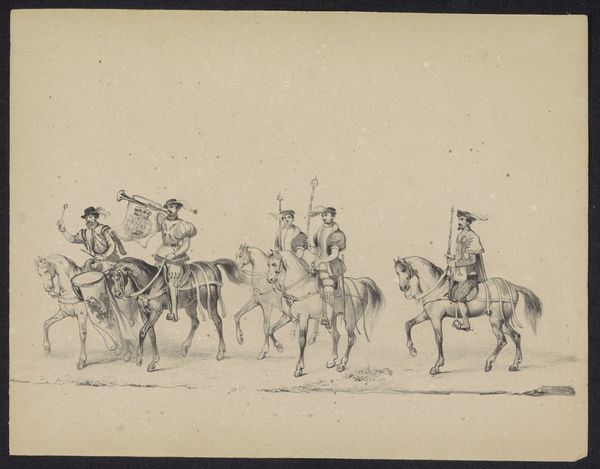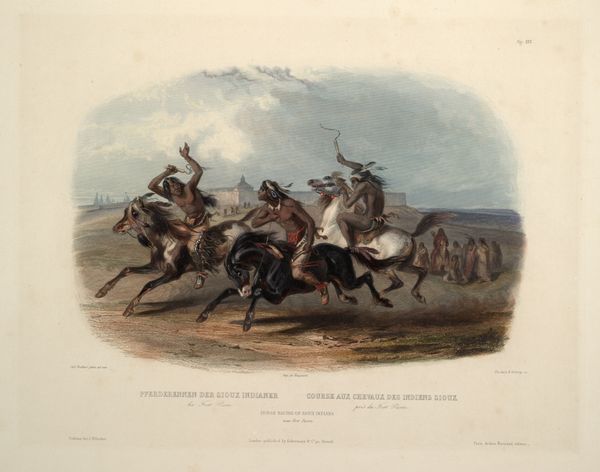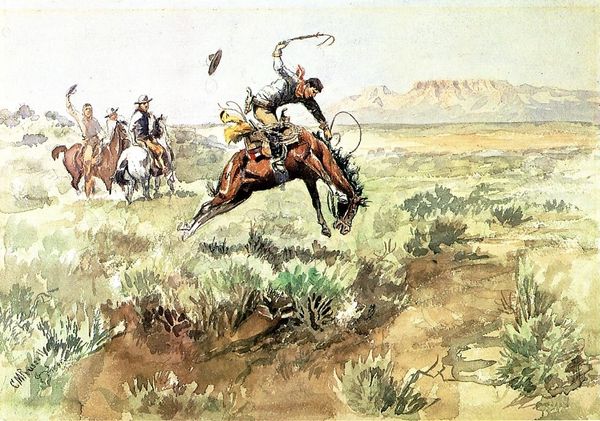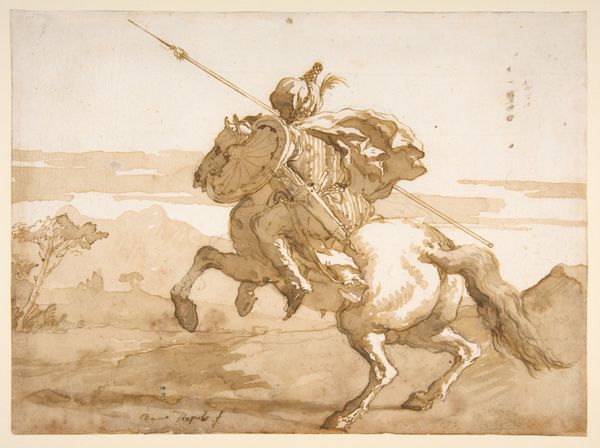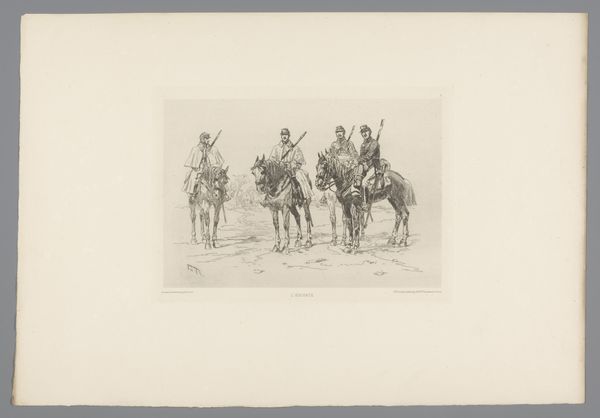
painting
#
water colours
#
painting
#
landscape
#
watercolour illustration
#
watercolor
Dimensions: 12 13/16 × 18 15/16 in. (32.54 × 48.1 cm) (sight)21 7/16 × 26 7/8 × 1 1/2 in. (54.45 × 68.26 × 3.81 cm) (outer frame)
Copyright: Public Domain
Editor: So, here we have Charles M. Russell's "Native Americans on Horseback," done around 1892-1895, rendered in watercolor. There's something wistful about it... like a memory fading into the prairie dust. What captures your imagination in this piece? Curator: It feels like a glimpse into a world both grand and rapidly vanishing, doesn't it? For me, it’s how Russell uses the watercolor, almost like he’s painting with the very light and atmosphere of the West. The looseness of the brushstrokes… it’s not about photographic detail, it's about capturing the essence, the feeling of movement and the vast openness. And you sense that openness, right? The space in this country is what allows this kind of movement. What does that openness evoke for you? Editor: It's the space and the transience of it all. The watercolor almost makes it feel ethereal. Was Russell trying to romanticize the West, or document a changing world? Curator: Ah, a bit of both, perhaps? He certainly wasn’t alone in that. Many artists wrestled with celebrating the “wild west” and documenting its transformation into a tamed space. You could see him as part of a generation caught between those two realities, a kind of eulogy but also an embrace of what was. What elements give you that sense of romanticism versus realism here? Editor: I guess the detail on the figures suggests a degree of accuracy, yet that hazy background also creates a dreamy impression, a slight remove from stark reality. Curator: Exactly! That tension between clarity and blur…it's where the poetry lives. It’s that delicate balance that makes this watercolor such a poignant image. Editor: This really gives me a lot to think about, particularly regarding representation, historical narrative and the use of realism in Western art. Curator: Absolutely. And to take those ideas out to the prairie is just as important. Remember that landscapes are always as much in our minds as on the earth.
Comments
minneapolisinstituteofart almost 2 years ago
⋮
What was Charles Russell’s relationship to Native Americans' He is known as a painter of “cowboys and Indians,” but the nuances of his life and work are predictably more complicated. Born and raised in St. Louis, Missouri, he left school for Montana at age 16, where he worked on a sheep ranch as a cowboy. During the summer of 1888, Russell lived near the Piegan and the Kainai Nation, members of the Blackfeet Confederacy. His interaction with these communities was always at a distance but his observations fueled his art. Russell may have stood out in his time by expressing support for some Native American issues but from today’s vantage point his work romanticizes and others Native people in a perpetual past.
Join the conversation
Join millions of artists and users on Artera today and experience the ultimate creative platform.
